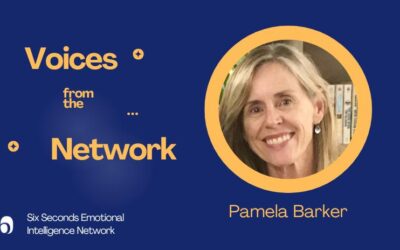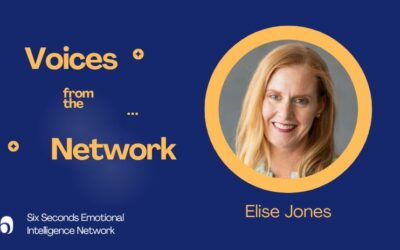How to Be a Great Leader
In organizations big and small, truly great leaders have one thing in common: they have a bigger purpose driving them, a why. It’s this connection to what’s really important that helps them be confident, authentic, and trustworthy, and research shows that those are the characteristics people remember about the leaders who have moved them the most.
And that leads us to a super important question: Can you articulate your why? What’s your bigger purpose, your noble goal? If you want to be an exceptional leader, finding and articulating your why should be at the top of your to do list – and this article takes you through a process for doing exactly that.
Why Find Your Why?
When we asked people all over the world to describe a leader they admired, someone who pushed them to be better than even they thought they could be, the words that came up the most were authentic, natural, and trustworthy.
The leaders who exhibit these characteristics, almost without exception, have a strong why – a guiding principle or set of principles that they refer back to when making all types of decisions. They exude a magnetic calmness, even in stressful and complex times, because they know what’s important to them at the end of the day. As Friedrich Nietzsche said, “he who has a why can endure any how.” And because they have this clarity that goes beyond the day-to-day craziness, it’s easy to trust them. People can feel that calm beneath the storm, and they are drawn to it.
 And research confirms that this has a big effect on how people respond to you as a leader. Two recent global surveys of the workplace have found a strong correlation between trust and performance. Employees in high trust companies perform way better than their counterparts in low trust companies. They are more productive, happy, and less likely to leave. In a way, this is common sense. When we work for people we trust, we want to do our best work and go the extra mile, not necessarily for them but with them. And part of earning that trust as a leader is knowing yourself – who you are and what your bigger purpose is in life. Taking that step will help you be more authentic, natural and trustworthy- and that drives personal and professional success.
And research confirms that this has a big effect on how people respond to you as a leader. Two recent global surveys of the workplace have found a strong correlation between trust and performance. Employees in high trust companies perform way better than their counterparts in low trust companies. They are more productive, happy, and less likely to leave. In a way, this is common sense. When we work for people we trust, we want to do our best work and go the extra mile, not necessarily for them but with them. And part of earning that trust as a leader is knowing yourself – who you are and what your bigger purpose is in life. Taking that step will help you be more authentic, natural and trustworthy- and that drives personal and professional success.
So whether your “organization” is a school, a family, or a Fortune 500 company, finding your personal why is a key component of figuring out how to be a great leader. But how, exactly, do you narrow that down?
How to Find Your Why?
Finding your why is a challenging task – and distilling it into a concrete, ready-to-go statement even more so. But don’t worry, we’re here to help.
There are many different names for your why, and you can call it what you want. In The Alchemist, Paulo Coelho calls a person’s why their personal legend, or in Spanish, their leyenda personal. Here at Six Seconds, we call a person’s why their noble goal, and pursuing noble goals – really living in a way that brings your bigger purpose to life every single day – is one of the core skills of emotional intelligence that we help each other to master. I don’t know about you, but I can’t think of anything more important than helping each other live more intentional, purpose driven lives – and it all starts with knowing your purpose.
Read on for a more nuanced definition of noble goals, examples of some of our team members’ noble goals, and expert tips for thinking about your own.
EQ Skill: Pursue Noble Goals A noble goal is a compelling statement of purpose that helps you make decisions and inspires you to live your best. One important thing to keep in mind is that pursuing noble goals isn’t about what you will do when you finally have time, which is who knows when for most of us. It’s about connecting your every day decisions and actions with this bigger purpose you have. Check out these examples:
To inspire compassionate wisdom.
To be a positive catalyst for the awesomeness of human potential.
To inspire others to be more.
Here are tips for finding, or clarifying, your noble goal: Start by asking yourself, what is that I want to contribute to the world?
To make sure that your noble goal is something enduring, expansive, and applicable to every part of your life, Six Seconds developed these guidelines:
Not complete in your lifetime – It is long lasting and inspiring, something beyond the every day struggle. This helps you maintain a long-term focus so you can avoid the confusion of short-term thinking.
Directed outward – While you will benefit, the focus is on others. This helps you maintain an expansive vision.
Integrates different areas – It encompasses all dimensions of your life; serving your noble goal in one area (such as work) supports you in all others (such as family). Think about Josh’s noble goal, “To inspire compassionate wisdom.” He can do this equally well when disciplining his teenage kids as he can while he leads a work meeting or orders his morning coffee.
Gets you out of bed – It motivates and inspires you at a deep level; this helps you to have the energy when the going gets tough.
No one made less – No one has to be “less than” or “wrong” for you to pursue your Noble Goal; this helps you stay out of ego and power struggle.
Once again it’s important to remember that pursuing noble goals isn’t about what you will do when you retire or finally have a vacation break. It’s about connecting your every day decisions and actions – that struggle with the teenager included – with this bigger purpose. If your noble goal is to sustain the earth for future generations, how does what you buy for lunch contribute to that goal? If your purpose is spreading love and compassion, how can you do that in your morning meeting or at dinner with your relatives?
So, what do you want to contribute to the world?
And what can you do today to bring that future into the present? One powerful way: Practice emotional intelligence. It’s not enough to have a Noble Goal. To pursue it takes an internal alignment — here’s an introduction to how you can use emotional intelligence:
Where Is the Why?
The bad news is that this sense of a bigger purpose, a critical part of knowing how to be a great leader, is not exactly widespread among, well, leaders. According to the Harvard Business Review, less than 20% of executives have a clear sense of their own individual purpose – and even less than that can distill their purpose into a concrete statement.
That is alarming news, considering the value that those leaders are losing, but it’s also an opportunity for growth. An opportunity for those leaders to grow, and an opportunity for other leaders to excel by mastering these skills themselves.
How to Be a Great Leader: Start with Why
When you are living our your bigger purpose every day, there is a beautiful confluence between what you want and what you are doing. You are using your why to drive your what and your how – and this authenticity will help you develop strong, trusting relationships both personally and professionally. And it helps you navigate all types of complex and difficult situations.
Give yourself time for this invaluable work. I recently head Joshua Freedman, Six Seconds’ ceo, say it took him 10 years to write his Noble Goal. Start now. Keep going. Working on your Noble Goal provides you energy and strength now – clarifying it takes a lifetime of polishing. So give yourself space to reflect on the questions in this article… and let us know what happens over your next decade!
Remember that we are here to help in this process – we are a non-profit dedicated to helping people be more emotionally intelligent. It’s the entire purpose of our organization to help people make positive change in their lives – and that means you! And if you want to be supported by like minded practitioners, be sure to participate in our online community on Facebook, Twitter, YouTube and LinkedIn. There are discussion and support groups, free webinars, articles and more. We could all use a little more positive, thoughtful content in our news feeds. And we put a few articles below that we thought you might like.
What's new in emotional intelligence?
Emotional Intelligence at Work: In the Era of AI, What Happens to Human Skills?
Who’s winning the artificial intelligence race: machines or people? Research finds AI investment leads to disinvestment in human skills
Helping Others Achieve Overall Well-being and Healthy Connections: How Emotional Intelligence Guided Pamela Barker’s Career Path Growth
Pamela Barker’s journey began with healing bodies, but it was her discovery of emotional intelligence that unlocked her true purpose: helping others achieve overall well-being and healthy connections. From her days as a physical therapist to becoming a passionate EQ coach, Pamela’s story is one of transformation, resilience, and the power of connection. Her experience shows that real change starts from within.
Emotional Intelligence at Work: Exploring the Principles of Exceptional Leaders
Check out these 7 valuable leadership lessons to be the best leader you can be and bring the best out of people.
Harnessing Emotional Intelligence: How Sara Canna Supports Employees and Transforms People’s Lives at the World Health Organization (WHO)
Emotional intelligence is more than just a buzzword—it’s a transformative tool that can reshape how we navigate challenges, build relationships, and thrive in demanding environments. Discover how Sara Canna brought EQ to the World Health Organization, empowering employees to manage change, stress, and personal growth.
3 Winning Strategies for Successful Change Leadership: Coaching with Emotional Intelligence
Can coaching tools help you lead successful organizational change? Here’s how to build team ownership and drive better outcomes by applying emotional intelligence for a coaching mindset.
From Corporate Consultant to Coach: Elise Jones’ Emotional Intelligence Journey-Voices from the Network
Elise Jones transformed her career by embracing emotional intelligence, shifting from a corporate consultant to a passionate EQ Coach. Through authentic connections, she found deeper fulfilment, proving that strong relationships are key to a happier, more meaningful life.
- Pursue Noble Goals in the Six Seconds Model of EQ - July 29, 2023
- Increase Empathy in the Six Seconds Model of EQ - July 26, 2023
- Exercise Optimism - July 24, 2023







Thank you for such insightful contributions